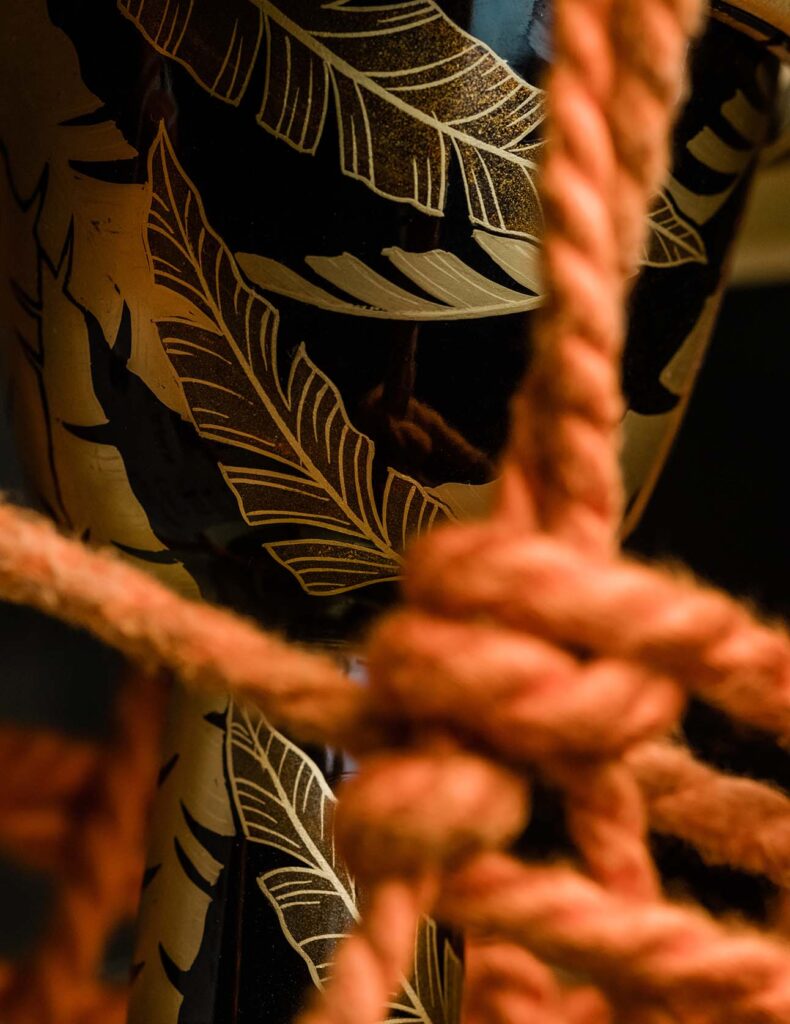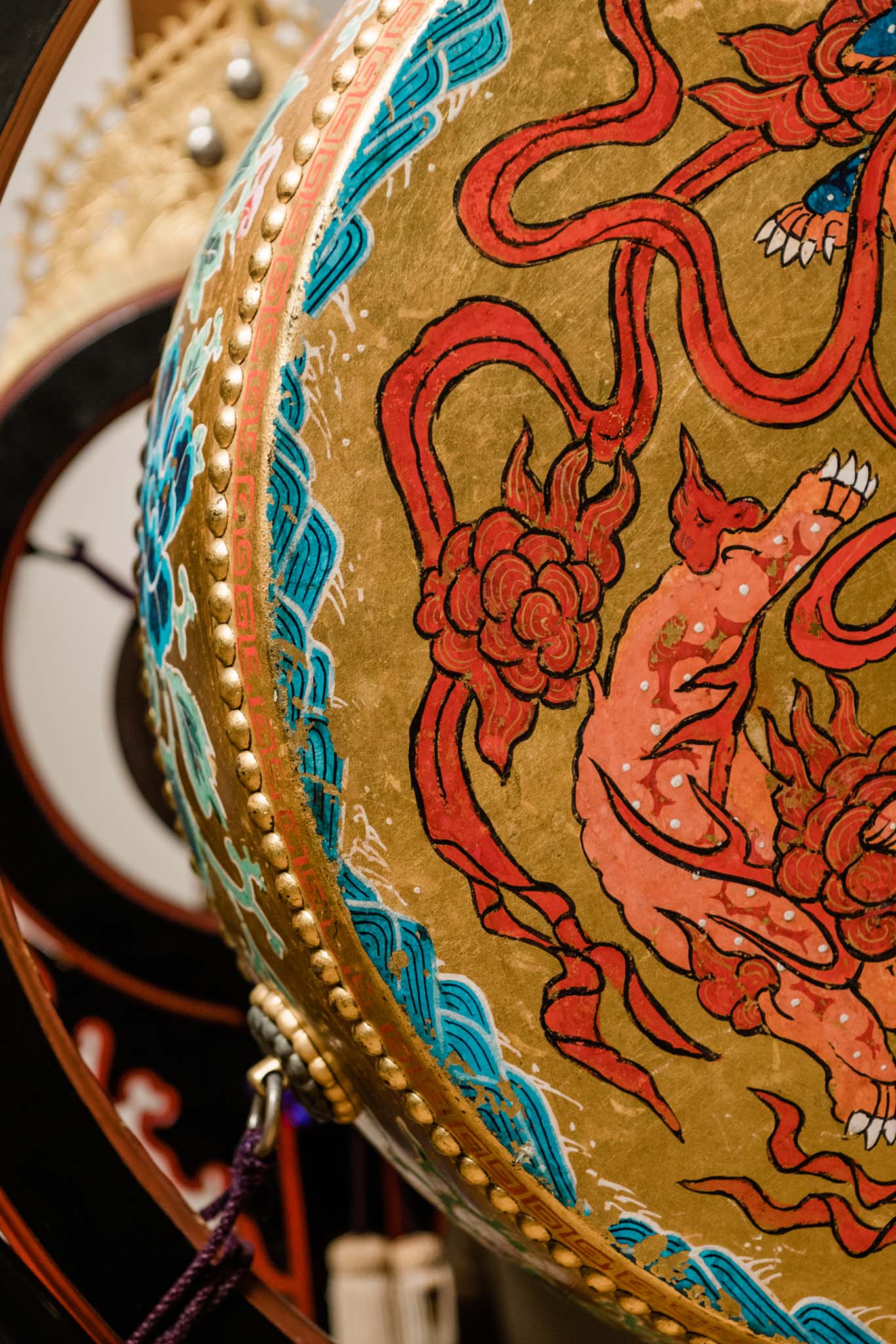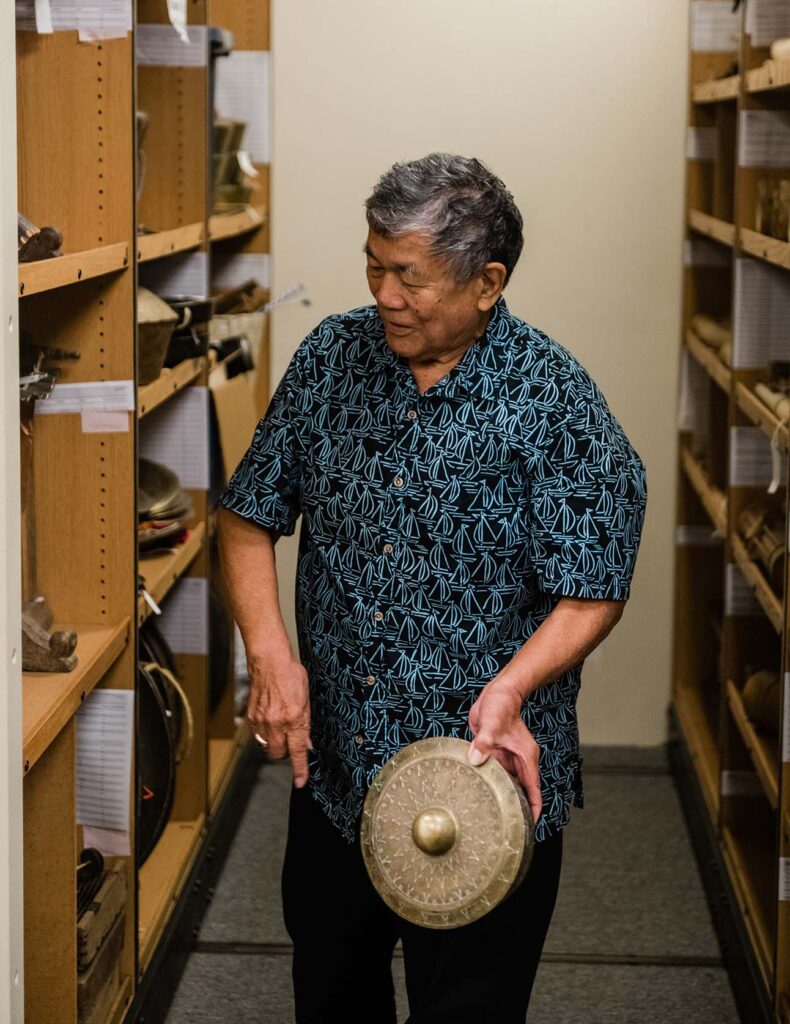
At first glance, the ethnomusicology collection at the University of Hawaiʻi at Mānoa appears a bit staid: eight sets of gray rolling metal shelves illuminated by fluorescent office lights, the smell reminiscent of a used bookstore. But through the eyes of Dr. Ricardo Trimillos, who has overseen the collection since the ’80s, the room blossoms. As he cranks open the shelves to reveal a Papua New Guinean drum coated in lizard skin or a jade gong from China, each item becomes a portal to a place or time or tidbit, which Dr. Trimillos narrates effusively. There’s the taiko drum purchased at auction for much less than its $10,000 value from a restaurant called Taiko, which went bankrupt shortly after it was opened by a Japanese businessman in the ’80s. Or the collection of tiny bird whistles that are not meant to sound like birds at all, Dr. Trimillos says, “but you attach it to a bird, like a pigeon, and when the pigeon flies away, you get this sound.”
The collection, composed of around 2,600 instruments, accessories, and items for dance, was established in 1958 by pioneering ethnomusicologist Barbara B. Smith, who died in 2021 at the age of 101. The California native began her career at UH Mānoa in 1948, teaching piano and music theory, just as the university was starting to develop its music department. “It was going to be a Western music department, teaching the usual classics,” says Dr. Trimillos, who studied under Smith as a graduate student in the ’60s. “But when she got here she discovered that there were a lot of other kinds of music going on in Hawai‘i, like Japanese and Filipino and Hawaiian, and these musics were not represented at the university. They were not part of the curriculum.”
Invigorated, Smith made it her mission to broaden the music department’s scope, eventually establishing the university’s ethnomusicology department. She hired the renowned chanter and composer James Ka‘upena Wong, who Dr. Trimillos says was the first Native Hawaiian hire at the university, to help develop the school’s hula program. She also started traveling extensively throughout Asia and the Pacific, where she befriended musicians and acquired local instruments, either as gifts or through purchase, which is how the collection started. Within the United States, it is currently the largest institutional ethnomusicology collection with a focus on instruments from Asia and the Pacific.
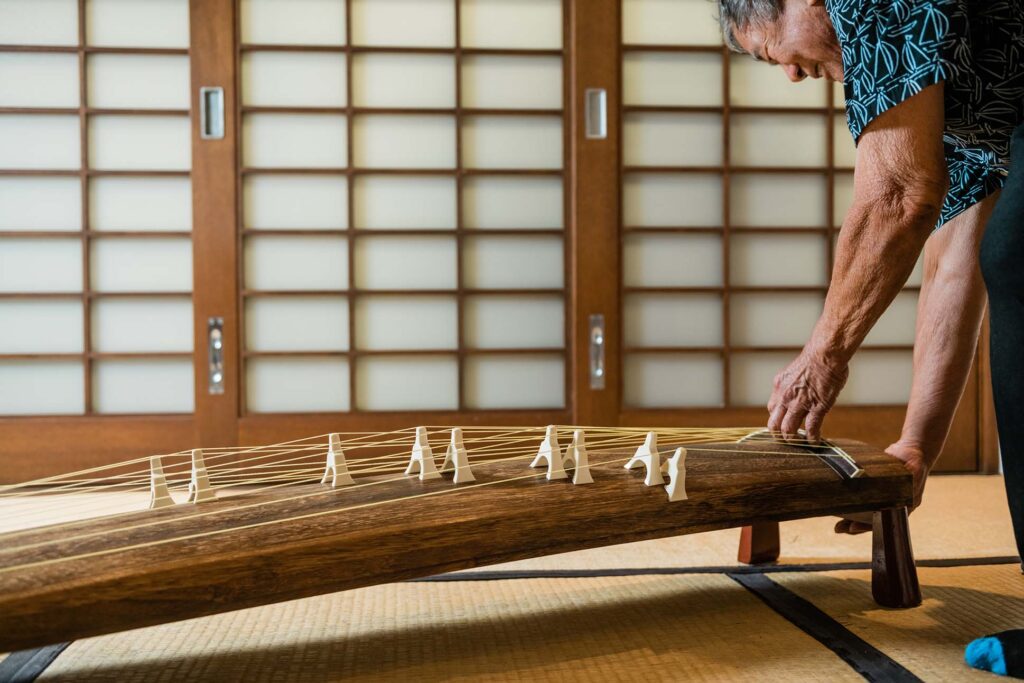
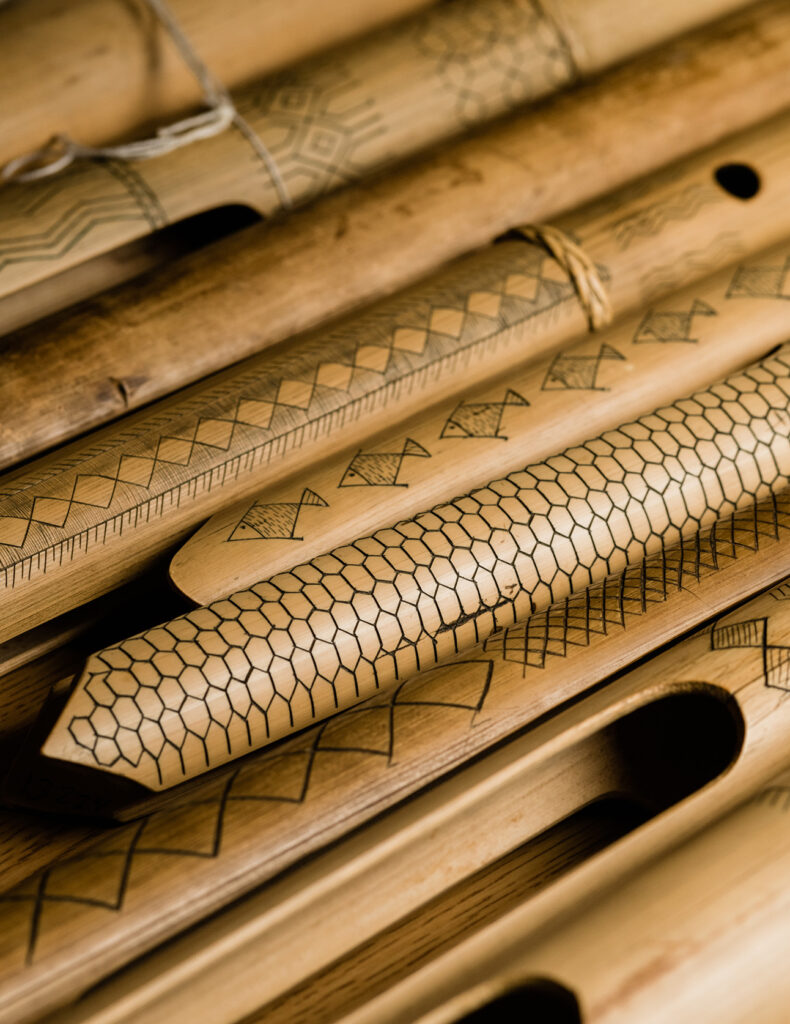
Despite its sheen of historical significance, the collection is not a museum, Dr. Trimillos stresses—the instruments are meant to be played. He sees his work overseeing the collection in two phases. The first is facilitating usage of the instruments among the student body, primarily for those enrolled in the university’s composition, dance, or ethnic music classes, like gagaku and Javanese gamelan. (In a bigger room next door sits the collection’s pièce de résistance: a Javanese gamelan composed of one-and-a-half tons of bronze that was purchased in 1972 from a Javanese court in Indonesia.) In this way the collection functions as a library, with shelves organized by categories like “Small Idiophones (wood)” and “Double-sided Drums.” A computer at the entrance catalogs what’s been loaned and notates where everything is shelved.
The second phase is maintaining the collection, which involves acquiring new instruments, registering them into the computer, and facilitating repairs. Every two years Dr. Trimillos also does what he calls “a read” of the entire collection, taking into account items that have gone missing or are out of place. Last year, he recorded about 30 missing instruments. The process takes around two months.
After serving as chair for the Asian studies department and teaching in the ethnomusicology department since 1968, Dr. Trimillos retired from the university in 2011. But he sees it as his kuleana, or responsibility, to oversee the collection as a volunteer, at least until the university hires a new ethnomusicologist to take over. Music is his lifeblood, his second language if he wasn’t already fluent in German, French, and Tausug, a dialect from the southern Philippines. Growing up in the Philippines, he was a prodigy, learning to play the piano when he was four and developing a reputation for playing duo piano with a kid from China. “We were the Ferrante and Teicher of the Asian world,” he says, smirking. Since then, he’s learned to play more than a dozen instruments, and actively plays four, including the koto, a Japanese instrument with 13 strings.
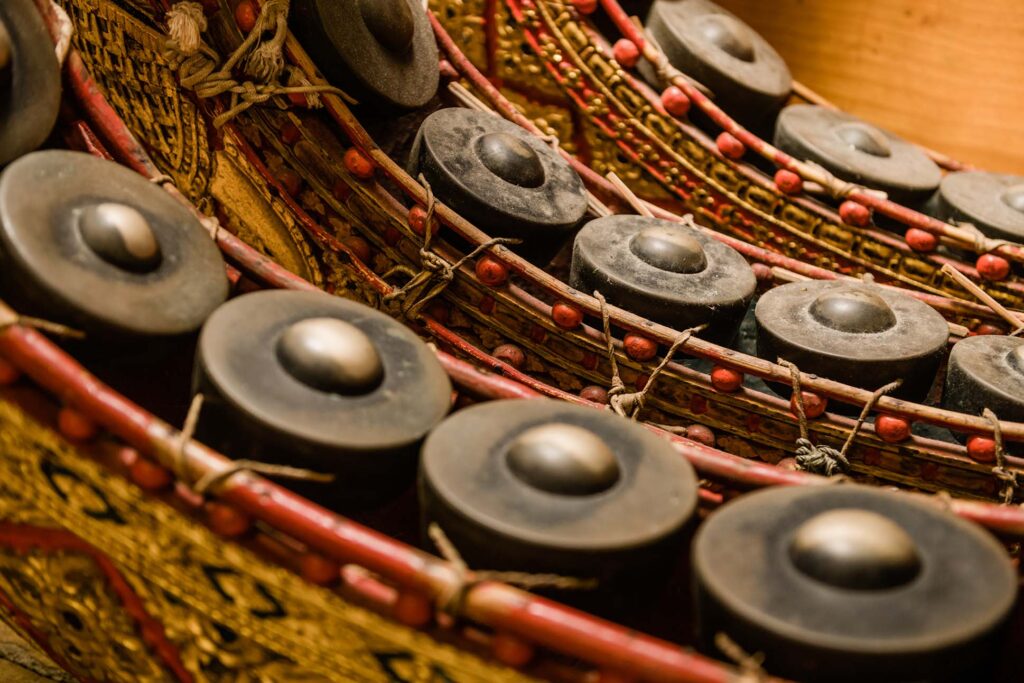
What fascinates Dr. Trimillos about the collection, and what he hopes to impress upon students, is how it reveals the boundlessness of the human imagination. He points to the flute, a simple object with an endless number of cultural variations around the world, each bearing a unique material, design, or sound. But even more compelling is the instrument’s ability to connect. “That’s another aspect of what ethnomusicology does: We’re very interested in differences, of course, but we’re also very interested in similarities,” he says. “What makes music-making a human thing?”

